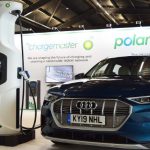Have you ever looked at the solar panels on roofs and wondered exactly what they do, and how? Well, those hi-tech expanses of shimmering glass are actually just one component in a complex network that harnesses the sun’s renewable energy to deliver electricity to the home within. Solar inverters also allow you to connect your solar panel system to the internet so you can access information about your system’s performance. This helps you compare your solar energy production and your household energy consumption so you can check if the system is functioning properly and meeting your electrical load as required. The more sunlight that reaches the solar panels, the more energy they generate. No matter where you live, solar energy can be an excellent investment and an excellent way to help combat climate change.
Energy-generating solar panels, which can be found on rooftops and in fields around the world (known as solar farms), have begun to alter the way we think about electricity fundamentally. An inverter is used to convert the energy generated by the panels into direct current (DC current). Read more about solar installer worcester here. On the other hand, with AC (alternating current) electricity, electrons are alternately pushed and pulled, periodically reversing direction, similar to a car’s engine piston.
Solar panels must be wired together to work as a unit, and that unit must be fixed to the roof or ground to ensure it stays where it needs to be. This is achieved by racking systems to mount and affix your panels to a surface.
The greater the number of solar panels you can install, the more energy you may expect to create. In other words, even if your solar panels may be less effective in warm weather, they will most likely generate more power in summer than they will in winter, regardless of the temperature. For more information about solar panels and related topics, check out the links in the next section. The thought of living at the whim of the weatherman probably doesn’t thrill most people, but three main options can ensure you still have power even if the sun isn’t cooperating. If you want to live completely off the grid, but don’t trust your PV panels to supply all the electricity you’ll need in a pinch, you can use a backup generator when solar supplies run low. Remember, silicon is a semiconductor — it’s not nearly as good as a metal for transporting current. Its internal resistance (called series resistance) is fairly high, and high resistance means high losses.
How to Store Solar Energy at Home
Thus, unlike traditional energy sources such as coal, it does harm the environment by emitting toxic material into the surrounding. It is, therefore, one of the energies whose increased use contributes to a sustainable future. Solar energy is obtained from a free and inexhaustible source, which is the sun. Thus, unlike fossil fuels, solar energy cannot be depleted but will continue to provide power to future generations. In an off-grid system, an inverter converts the DC electricity stored in the battery bank into AC power. The power is then utilized within the home or business premises in the same way as the mains. Charge controllers also have DC output terminals that allow you to connect appliances while charging batteries.
Solar Panels and Electricity Generation
Silicon is a common material found in many soils, sands, and rocks. There is small amounts of solder containing some lead that is used to connect solar cell wires, but as the cell is sealed in the panel, this small amount of solder cannot leave the panel. Researchers have produced ultrathin, flexible solar cells that are only 1.3 microns thick — about 1/100th the width of a human hair — and are 20 times lighter than a sheet solar installer gloucester


